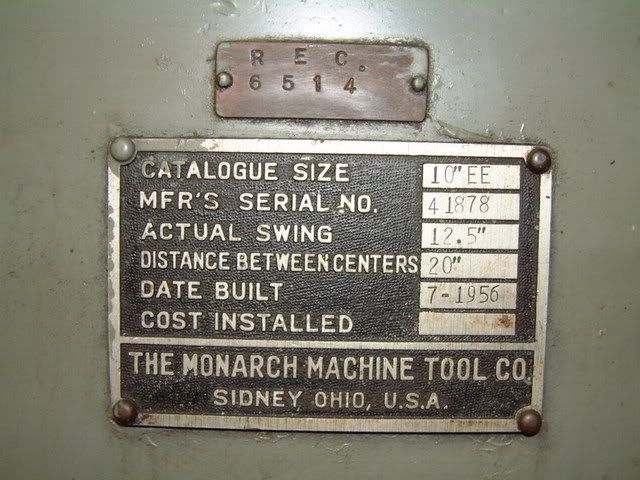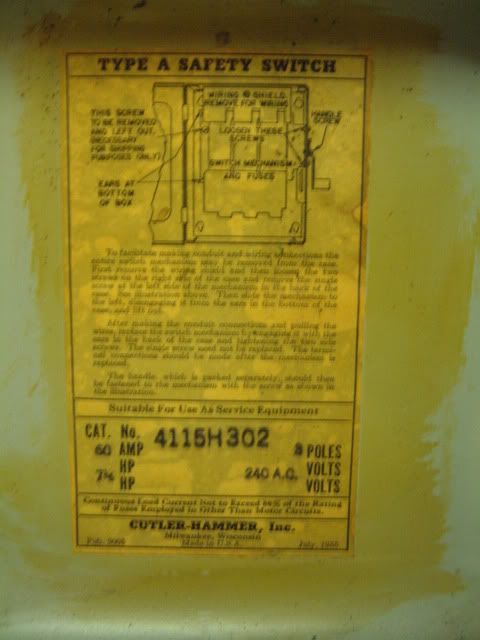Hoppy
Cast Iron
- Joined
- Feb 21, 2005
- Location
- Millington, NJ
Here's a couple of pictures of my '56 10EE WIAD that I won at a local auction a few months ago.


It's a long story, but some personal commitments kept me from spending any time with the machine until now. Obviously, it needs a really good cleaning and I'll start on that right away. My long-term plans are to partially disassemble, polish, and paint. Before starting that project, however, I want to work on any electrical gremlins that might be living in the machine. I would really like to keep the machine as close to original as possible, so I'd like to stay with the WIAD rather than converting to a VFD.
I'm a bit confused about the electrical hookup. The junction box (with disconnect) on the back of the lathe is for three phase power and has three fuses. My machine, however, doesn't have a coolant pump and, if I understand correctly from some of the other threads, doesn't need three phase power. If that's the case, which leads do I connect to? Here's a picture of the label on the junction box:

I'm sure I'll have more questions once I get the machine powered up!


It's a long story, but some personal commitments kept me from spending any time with the machine until now. Obviously, it needs a really good cleaning and I'll start on that right away. My long-term plans are to partially disassemble, polish, and paint. Before starting that project, however, I want to work on any electrical gremlins that might be living in the machine. I would really like to keep the machine as close to original as possible, so I'd like to stay with the WIAD rather than converting to a VFD.
I'm a bit confused about the electrical hookup. The junction box (with disconnect) on the back of the lathe is for three phase power and has three fuses. My machine, however, doesn't have a coolant pump and, if I understand correctly from some of the other threads, doesn't need three phase power. If that's the case, which leads do I connect to? Here's a picture of the label on the junction box:

I'm sure I'll have more questions once I get the machine powered up!

